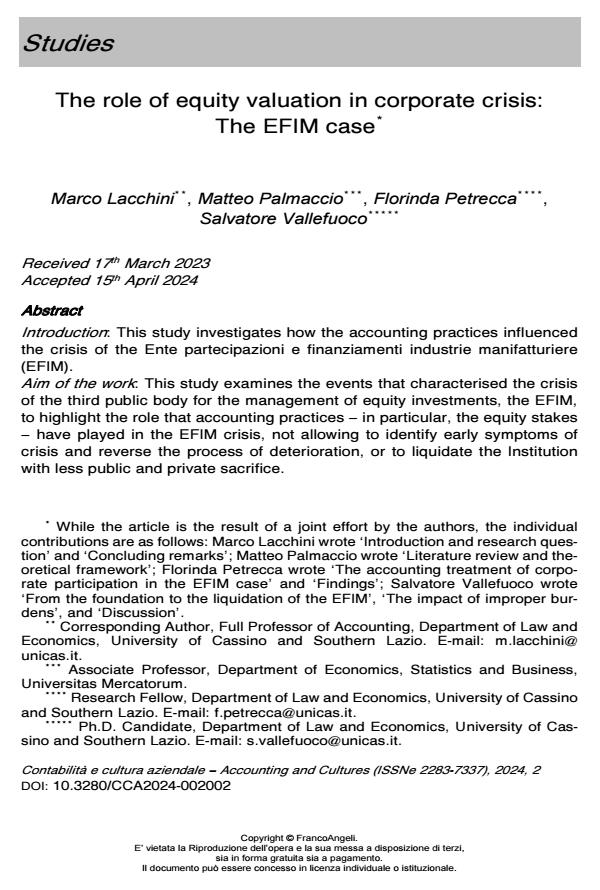The role of equity valuation in corporate crisis: The EFIM case
Journal title CONTABILITÀ E CULTURA AZIENDALE
Author/s Marco Lacchini, Matteo Palmaccio, Florinda Petrecca, Salvatore Vallefuoco
Publishing Year 2024 Issue 2024/2
Language English Pages 22 P. 9-30 File size 677 KB
DOI 10.3280/CCA2024-002002
DOI is like a bar code for intellectual property: to have more infomation
click here
Below, you can see the article first page
If you want to buy this article in PDF format, you can do it, following the instructions to buy download credits

FrancoAngeli is member of Publishers International Linking Association, Inc (PILA), a not-for-profit association which run the CrossRef service enabling links to and from online scholarly content.
Introduction: This study investigates how the accounting practices influenced the crisis of the Ente partecipazioni e finanziamenti industrie manifatturiere (EFIM). Aim of the work: This study examines the events that characterised the crisis of the third public body for the management of equity investments, the EFIM, to highlight the role that accounting practices – in particular, the equity stakes – have played in the EFIM crisis, not allowing to identify early symptoms of crisis and reverse the process of deterioration, or to liquidate the Institution with less public and private sacrifice. Methodological approach: This study is based on a critical interpretative methodological approach. Main findings: Accounting practices with specific reference to the accounting rules of corporate participations and the legal form of public-law entities have played a decisive role in the financial distress of the EFIM. Originality: This study expands the knowledge on the role that accounting practices of corporate participations can play in company financial distress, particularly in the EFIM’s financial distress.
Keywords: EFIM, corporate participations, equity method, accounting practice
Marco Lacchini, Matteo Palmaccio, Florinda Petrecca, Salvatore Vallefuoco, The role of equity valuation in corporate crisis: The EFIM case in "CONTABILITÀ E CULTURA AZIENDALE" 2/2024, pp 9-30, DOI: 10.3280/CCA2024-002002